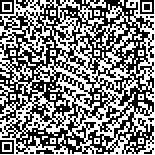韩秀兰,许轶,李小金,王楚怀,张桂芳,李丹.青少年特发性脊柱侧凸症患者下肢的生物力学分析[J].中华物理医学与康复杂志,2016,38(6):440-443
扫码阅读全文

|
| 青少年特发性脊柱侧凸症患者下肢的生物力学分析 |
|
| |
| DOI: |
| 中文关键词: 青少年 特发性脊柱侧凸症 下肢; 生物力学 |
| 英文关键词: Adolescent Idiopathic scoliosis Lower limb Biomechanics |
| 基金项目: |
|
| 摘要点击次数: 3729 |
| 全文下载次数: 5708 |
| 中文摘要: |
| 目的 分析青少年特发性脊柱侧凸症(AIS)患者的下肢生物力学指标,探讨下肢生物力学异常与AIS之间的联系。 方法 选取AIS患者116例(侧凸组)和健康青少年受试者116例(正常组),对2组受试者的胫骨扭转角、前后足平面夹角、髋关节旋转范围、双下肢长度差、踝关节旋转范围等下肢生物力学指标进行检测和比较,并采用多因素回归分析分析AIS患者脊柱侧凸的危险因素。 结果 侧凸组双下肢长度差和前后足平面的夹角分别为(5.94±6.07)mm和(0.17±4.72)°,分别与正常组的对(0.74±2.20)mm和(-0.46±3.60)°比较,差异均有统计学意义(P<0.01)。侧凸组左、右踝关节旋转范围差值为-1.27°,差值标准差为3.28,经过符号秩和检验,Z值为-4.83,差异有统计学意义(P<0.01)。多因素回归分析,发现双下肢长度差和双前、后足平面夹角差是患脊柱侧凸的风险因素。双下肢长度差值优势比为1.45,差异有统计学意义(P<0.01),双下肢长度差增加一个单位(1cm)的患脊柱侧凸的风险较低一个单位的脊柱侧凸高1.45倍,而双前、后足平面夹角差值优势比为0.97,差异有统计学意义(P<0.01),即前、后足平面夹角差值减少一个单位,患脊柱侧凸的风险是高一个单位的0.97倍。 结论 双下肢的长度差与双前后足平面的夹角差值是AIS的危险因素。 |
| 英文摘要: |
| Objective To analyze the biomechanical properties of the lower limb in patients with adolescent idiopathic scoliosis (AIS), and to explore the relationship between the biomechanical anomaly of lower limbs and AIS. Methods A total of 116 AIS patients were recruited as the observation group, and another 116 healthy counterparts were selected as the control group. The biomechanical properties of the lower limbs including the torsion angle of the tibia, forefoot-rearfoot angle, rotation angle of the hip joint, leg length difference, and pronation of the ankle were measured and compared between the 2 groups. Then multiple factors regression analysis was conducted to reveal the risking factors for AIS. Results Significant differences were observed between the AIS group and the control group in the leg length difference [(5.94±6.07) mm vs (0.74±2.20)mm] and forefoot-rearfoot angle [(0.17±4.72)° vs (-0.46±3.60)°] (P<0.01). In the AIS group, significant differences were found in the rotation amplitude of the left and right ankle, with a difference of -1.27° at standard deviation of 3.28 (P<0.01). Multi-factor regression analysis indicated that the leg length difference and forefoot-rearfoot angle were risk factors for AIS. The odds ratio of the leg length difference and forefoot-rearfoot angle were 1.45 and 0.97, respectively. Conclusions The leg length difference and forefoot-rearfoot angle are risk factors for AIS. |
|
查看全文
查看/发表评论 下载PDF阅读器 |
| 关闭 |
|
|
|